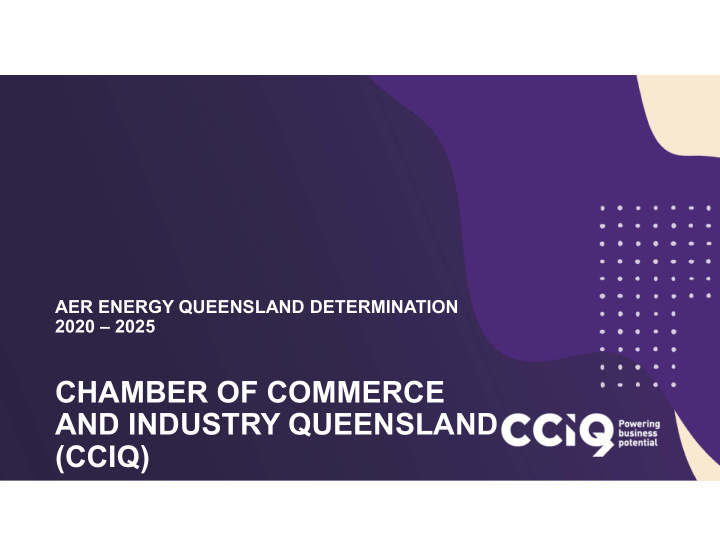



AER ENERGY QUEENSLAND DETERMINATION 2020 – 2025 CHAMBER OF COMMERCE AND INDUSTRY QUEENSLAND (CCIQ)
ABOUT CCIQ • CCIQ is Queensland’s peak industry representative organisation for small and medium businesses • We represent over 448,000 Queensland small and medium businesses (SMEs) • SMEs constitute 97.7% of Queensland businesses • SMEs employ 66% of Queenslanders in the private sector
POWER PRICES: CCIQ MEMBER VIEWS • CCIQ conducts the Suncorp Pulse Survey of Business Conditions (Pulse Survey) once-a- quarter • The Pulse Survey is the largest survey of Queensland businesses • Electricity prices consistently cited among biggest pain points for business • It has been the No.1 pain point for businesses in several of our quarterly surveys
2020 – 2025 DRAFT DECISION • CCIQ acknowledges the AER Draft Decision (October 2019) moderating Maximum Allowable Revenue (MAR) for: • Ergon Energy • Leading to $82/year ($6.80/month) savings for average small business customers • Energex • Leading to $82/year ($6.80/month) savings for average small business customers • Savings are always welcome but, in this case, are very limited in scale
SUGGESTIONS • Continued insistence on evidence and quantitative cost-benefit analysis to support capex forecast • Interrogate this when delivered by Ergon and Energex • Continued push for efficient opex as a result of merger leading to formation of EQ • These measures may add to the $6.80/month savings predicted for small businesses under current draft decision
BIGGEST NETWORK COST DRIVERS • Inflated RAB • Financing costs • Tax Allowance • Negative incentives • MAR allows networks to raise prices to meet MAR in the event of lower-than-predicted power demand
FINAL QUESTION • Given widespread agreement on • Over-investment in network infrastructure • Networks constituting biggest proportion of power bills • Massive negative impact on business and consumers • Urgent need to reduce power prices • The proposed savings of $6.80/month are disappointing • Are we really tackling the biggest cost drivers? If not, why?
Recommend
More recommend